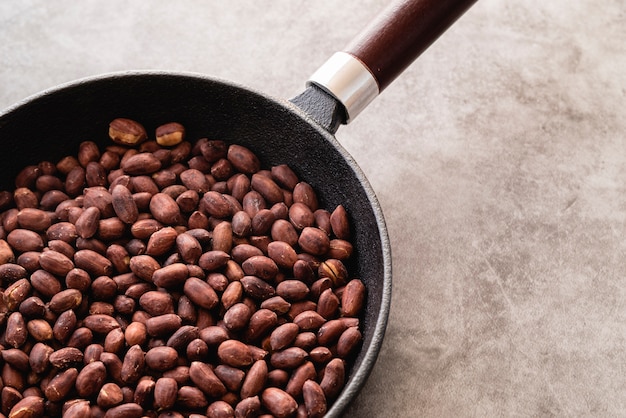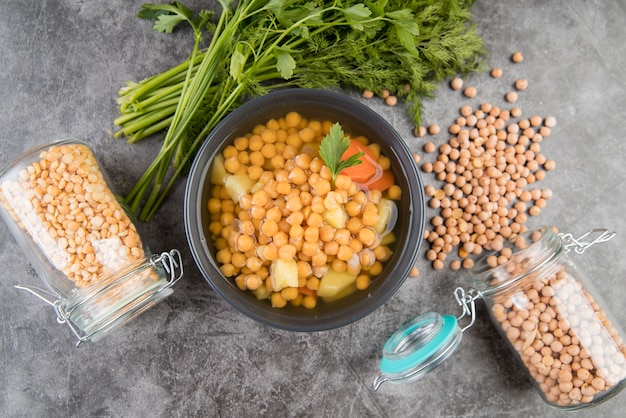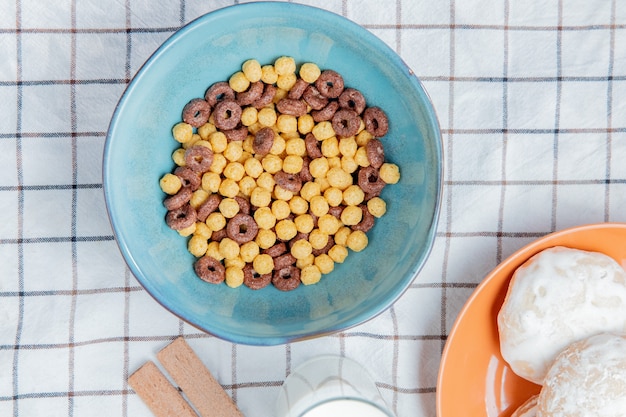Right, let's talk about pinto beans. Not just any old beans, mind you, but the perfect pinto bean. The kind that melts in your mouth, is perfectly tender, and has just the right amount of flavour. I've been on this quest for the perfect pinto bean for years, trying every tip and trick I could find. I've had my fair share of mushy beans, undercooked beans, and beans that tasted like, well, nothing at all. But I'm here to tell you, I've finally cracked the code. And I'm going to share all my secrets with you.
This isn't just a recipe, it's a journey. It's a journey into the heart of the humble pinto bean, a journey that will unlock a whole new world of flavour. You ready? Let's go!
Part 1: The Bean of Choice

First things first, you need the right beans. Now, I know what you're thinking: "Pinto beans are pinto beans, right?" Wrong! Trust me, there's a difference, and it's a big one. You want beans that are plump, firm, and have a nice, uniform colour. Avoid beans that are cracked, broken, or discoloured. They're just not going to cook up as nicely.
I personally prefer dried beans. They're cheaper, more flavourful, and you have a lot more control over the cooking process. Plus, there's something incredibly satisfying about starting with raw beans and transforming them into something delicious. But if you're short on time, canned beans will do the trick. Just make sure to rinse them thoroughly to remove any excess salt and starch.
Picking the Perfect Pinto Bean
So, you're at the supermarket, staring at a wall of beans. How do you choose the right ones? Here are my tips:
- Go for organic: Organic beans are grown without pesticides and herbicides, which is better for the environment and your health.
- Check the packaging: Make sure the beans are packaged in a clean, sealed container. Look for a date code and make sure the beans aren't expired.
- Give them a sniff: fresh beans should have a mild, earthy aroma. If they smell sour or rancid, move on.
- Check for colour: The perfect pinto bean has a nice, even colour, without any noticeable discolouration.
- Feel the beans: They should feel firm and plump, not dried out or shrivelled.
Part 2: Preparing the Beans

Right, you've got your beans, now it's time to get them ready for cooking. This is where a lot of people go wrong. They just throw them in a pot and call it a day. But that's not going to give you the best results.
Soaking the Beans: A Vital Step
Soaking the beans is an absolute must, especially if you're using dried beans. It softens them up, making them cook faster and more evenly. It also helps to reduce the amount of gas-causing compounds in the beans, which is a bonus for anyone who's ever experienced the "bean burp".
To soak your beans, simply combine them with enough water to cover them by a few inches. Add a tablespoon of salt to the water. Salt helps to draw out some of the impurities from the beans and adds flavour. Cover the pot and let the beans soak for at least 8 hours, or even overnight.
Here's the thing, though. Some people say soaking beans is a waste of time. They argue that you can cook them directly from dry. I've tried both ways, and I can tell you, soaking makes a difference. The beans are just more tender and flavourful.
Rinsing the Beans: Removing Impurities
Once your beans are soaked, it's time to rinse them. Drain the soaking water and rinse the beans under cold water. This removes any debris or sediment that may have settled at the bottom of the pot.
Part 3: The Perfect Pot of Pinto Beans

Now comes the fun part: cooking the beans. This is where your patience comes in. cooking beans takes time, but it's worth it.
Choosing Your Pot: The Right Equipment
I always use a large, heavy-bottomed pot for cooking my beans. This ensures even heating and prevents scorching. I also prefer to use a pot with a lid. A lid helps to trap steam and helps the beans cook more quickly.
The Ratio of Beans to Water: Finding the Sweet Spot
The ratio of beans to water is crucial for cooking perfect pinto beans. You want enough water to cover the beans by a couple of inches. A general rule of thumb is to use 3 cups of water for every 1 cup of beans. But you can always adjust the amount of water depending on your preference. If you want your beans to be more soupy, add a bit more water. If you want them to be drier, add less.
The Power of Flavor: Spices and Aromatics
Now comes the part where you get to unleash your creativity. This is where you add your favourite herbs and spices to the beans. I always start with a good pinch of salt and pepper. Then, I add a bay leaf, a few cloves of garlic, and a small onion. You can also add other spices like cumin, chili powder, oregano, or paprika. Just experiment and find what you like best.
The Cooking Process: Patience is Key
Bring the pot of beans to a boil over high heat. Once the water is boiling, reduce the heat to a simmer. Cover the pot and let the beans simmer for at least 1 hour, or until they are tender. You'll know they're done when you can easily mash a bean between your fingers.
If the beans are still a bit firm after an hour, keep simmering them for another 30 minutes, or until they reach your desired tenderness.
Part 4: The Finishing Touches
Your beans are cooked, but we're not done yet. Now comes the fun part: adding the finishing touches to make your beans truly irresistible.
Mashed or Whole? A Matter of Preference
You can either serve your beans whole or mash them. If you're making a hearty soup or chili, I recommend mashing some of the beans to thicken the sauce.
Adding a Touch of Acidity: Balancing Flavours
A touch of acidity really balances out the richness of the beans. I love to add a tablespoon of lime juice or apple cider vinegar to my beans. You can also add a splash of Worcestershire sauce, if you like.
A Final Seasoning: Taste and Adjust
Finally, season your beans to taste. I usually add a pinch of salt, pepper, and a touch of cayenne pepper for a bit of heat. You can also add other spices, like cumin, chili powder, or paprika, if you like.
Part 5: The Perfect Bean Accompaniments
Right, you've got your perfect pinto beans. Now it's time to think about what you're going to serve them with. The possibilities are endless!
Classic Combinations: Standby Favorites
- Rice and beans: A classic for a reason! The starchy rice complements the creamy beans beautifully.
- Beans and cornbread: A Southern favourite that's sure to please. The sweet cornbread is the perfect foil for the savory beans.
- Beans and tortillas: Another classic combination that's perfect for making burritos, tacos, or quesadillas.
Creative Options: Beyond the Basics
- Beans and salads: Add a handful of pinto beans to your favourite salad for a protein boost and a burst of flavour.
- Beans and soups: Pinto beans are a staple in many soups, like chili, black bean soup, and white bean soup.
- Beans and stews: Use pinto beans to add flavour and texture to your favourite stews.
- Beans and dips: Pinto beans are a great base for dips like refried beans or bean dip.
- Beans and vegetarian chili: For a hearty and satisfying vegetarian meal, use pinto beans as the base of your chili.
Part 6: bean storage and Leftovers: Making the Most of Your Beans
Now you've cooked a whole pot of beans, what do you do with them? They'll keep for a few days in the fridge.
Storing the Beans: Keeping Them Fresh
Store your cooked beans in an airtight container in the refrigerator for up to 4 days.
Freezing the Beans: Stock Up for Later
You can also freeze cooked beans for later use. To freeze beans, simply transfer them to a freezer-safe container or bag. You can freeze them for up to 3 months.
Using Leftover Beans: Delicious Second Helpings
Leftover beans are a great way to make a quick and easy meal. You can use them to make soups, stews, salads, or even burritos.
Part 7: pinto bean variations: Exploring New Flavors
We've covered the basics of cooking pinto beans, but there are endless variations on this classic dish. Here are a few ideas to get your creative juices flowing:
Spicy Pinto Beans: Add Some Heat
Add some heat to your beans with a generous amount of chili powder, cayenne pepper, or chipotle powder. You can also add a diced jalape??o pepper for extra kick.
Smoky Pinto Beans: A Touch of Smoke
Smoked paprika, chipotle peppers in adobo sauce, or even a few drops of liquid smoke will add a smoky flavour to your beans.
Sweet and Savory Pinto Beans: A Balanced Flavor Profile
Add a touch of sweetness to your beans with a tablespoon of brown sugar, honey, or maple syrup. This is a great way to balance out the savory flavours of the beans.
Herbed Pinto Beans: Fresh and Flavorful
Add a handful of fresh herbs, like cilantro, parsley, or oregano, to your beans for a fresh, vibrant flavour.
Part 8: Pinto bean faqs
Here are some common questions about cooking pinto beans.
FAQs
| Question | Answer |
|---|---|
| How long do pinto beans take to cook? | dried pinto beans typically take 1-2 hours to cook, depending on the age of the beans and the soaking time. Canned beans are already cooked and can be heated through in about 15 minutes. |
| What happens if I don't soak my beans? | If you don't soak your beans, they will take longer to cook and may not be as tender. They may also be more prone to splitting or becoming mushy. |
| Can I use any type of water to cook my beans? | It's best to use fresh, filtered water to cook your beans. Avoid using hard water, as it can make the beans tough. |
| What if my beans are still hard after cooking? | If your beans are still hard after cooking, they may need to be cooked for a bit longer. You can also try adding a tablespoon of baking soda to the pot of beans. Baking soda helps to soften the beans. |
| What can I do with leftover pinto beans? | Leftover pinto beans can be used in a variety of dishes, including soups, stews, salads, burritos, tacos, and chili. You can also freeze them for later use. |
Part 9: Embrace the Bean-Cooking Journey
Right, that's it! My ultimate guide to cooking perfect pinto beans. But remember, this is just a starting point. It's all about finding what you like and what works for you. Experiment, have fun, and enjoy the process.
As a seasoned bean enthusiast, I can say this: The journey to the perfect pinto bean is just as important as the destination. So, embrace the adventure, and happy bean cooking!
Everyone is watching

Corn on the Cob: The Ultimate Guide to Perfectly Cooked Ears
Healthy MealsAh, corn on the cob. Just the name evokes images of sunny days, barbecues, and that sweet, juicy flavour that ...

Perfect Pork Roast Oven Cooking Time: A Guide to Delicious Results
Healthy MealsThere's something truly satisfying about a perfectly roasted pork. The aroma alone is enough to make your mout...

Ham Cooking Time: How Long to Bake, Smoke, or Boil a Delicious Ham
Healthy MealsAh, ham. It's a classic, isn't it? A real crowd-pleaser, especially around holidays. And when done right, it'...

Scallops: The Ultimate Guide to Perfect Cooking
Healthy MealsAh, scallops. Those delicate, sweet, and utterly delicious morsels of the sea. They hold a special place in my...

Spaghetti Squash: The Ultimate Guide to Cooking and Serving
Healthy MealsRemember that time you saw spaghetti squash at the supermarket, looking all bumpy and strange, and thought, "W...
